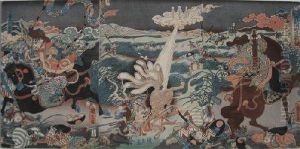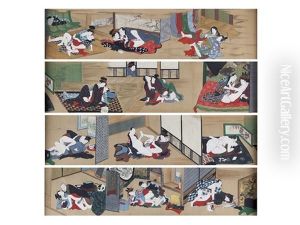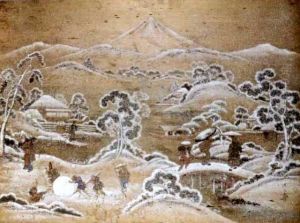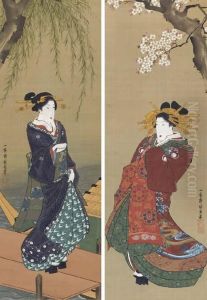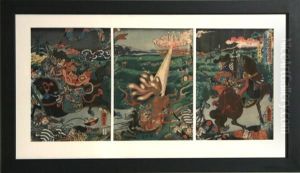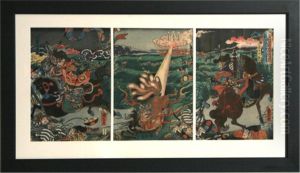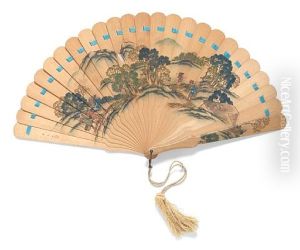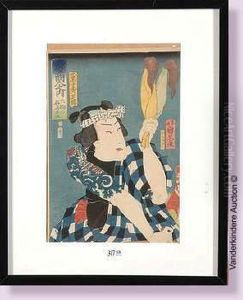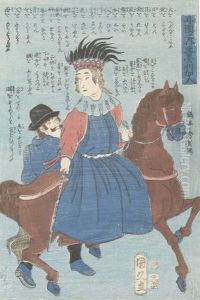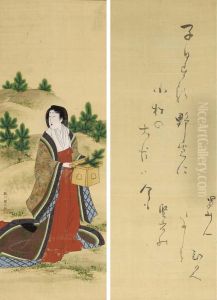Utagawa Kunihisa Paintings
Utagawa Kunihisa was a Japanese ukiyo-e artist, known for his woodblock prints. He was born in 1832 into the Utagawa school, which was one of the most prominent and influential schools in the genre of ukiyo-e. The Utagawa school produced numerous artists who were masters of the woodblock printing technique, and Kunihisa learned under the guidance of Utagawa Kunisada, who was one of the leading figures in the school at that time.
Kunihisa's work was produced during the late Edo period and early Meiji period, which was a time of significant transition in Japan as the country opened up to the West and began to modernize. This period was marked by a mix of traditional Japanese elements with Western influences, and Kunihisa's prints reflect this transition.
While Kunihisa was not as famous as his mentor Kunisada or his contemporaries such as Kuniyoshi and Hiroshige, he still made a considerable contribution to the world of ukiyo-e. His works included a variety of subjects such as kabuki actor portraits, bijin-ga (pictures of beautiful women), and other typical genres of the time. His style was characterized by the use of vibrant colors and a keen attention to detail, which was common in the Utagawa school.
Kunihisa also worked during a time when the woodblock printing industry was facing significant changes. The introduction of photography and other modern printing techniques in Japan led to a decline in traditional ukiyo-e production. Despite these challenges, Kunihisa produced prints that were appreciated for their craftsmanship and aesthetic value.
Utagawa Kunihisa passed away in 1891, leaving behind a legacy of prints that contribute to the rich tapestry of Japanese art history. Although not as well-remembered as some of his peers, his works are still collected and studied for their representation of a pivotal moment in Japanese art and culture.
